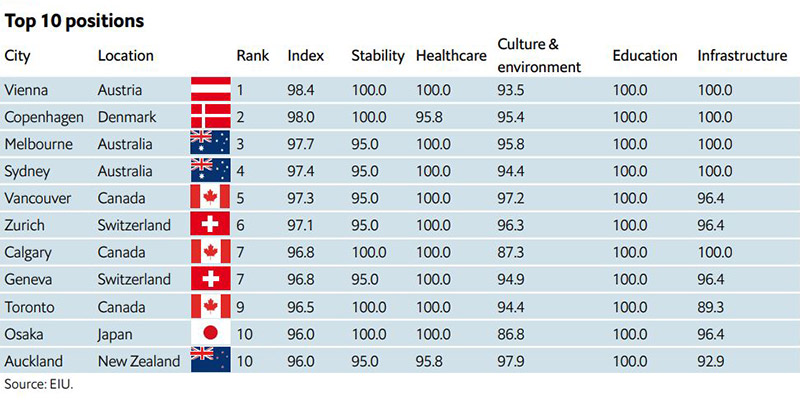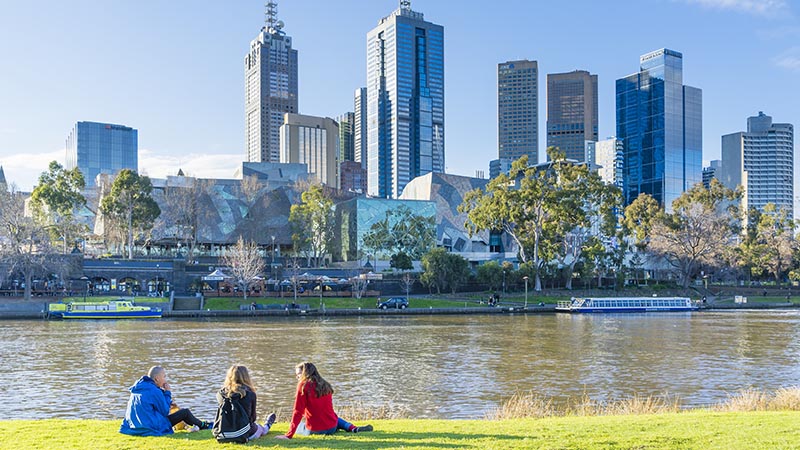Melbourne, Sydney soar up global liveability rankings but Brisbane cries foul
Melbourne and Sydney are world leaders for liveability, Perth and Adelaide have soared up the charts, Brisbane has been overtaken and renters are forgotten altogether.
Melbourne and Sydney sit the near top of The Economist’s newly released Global Liveability Index 2023 while Perth and Adelaide were among the biggest improvers on the list that helps shape international property investment and employment decisions.
Australia’s two largest cities rebounded back up the rankings after a sharp pandemic-driven tumble in 2022, with Melbourne now ranked third and Sydney fourth on the list topped by Vienna and then Copenhagen.
The Economist Intelligence Unit (EIU) assesses which locations around the world provide the best or worst living conditions, and factors in conditions such as healthcare, cultural events, educational opportunities, infrastructure and the environment.
Sydney and Melbourne had slipped out of the top 10 last year due to Covid-related healthcare issues but leapt back into the top echelon of liveable cities.
Among the world’s biggest improvers in the index released Thursday (22 June), for similar reasons, were Perth and Adelaide.
The West Australian capital soared 21 places to 12th on the list, to be equal with Adelaide, which rose 19 places.

Perth was the third biggest mover up the charts behind two New Zealand cities, Auckland and Wellington, while Adelaide, which is also undergoing a property resurgence, was the sixth fastest mover.
All four Australian cities benefited greatly from big gains in their healthcare category scores since last year, when they were still affected by Covid waves that stressed their healthcare systems.
Brisbane media is claiming their city was robbed to be ranked 16, although it is up from 27th last year.
The Brisbane Times headlined an article ‘Brisbane was robbed in the liveable cities index but still outshone Sydney on Origin night’.
While sport and culture are factored into the EIU index, unfortunately for the Maroons rugby fans the actual contest results are not.
The diminishing impact of Covid lifted scores around the world. The average index score across all 172 cities (excluding Kiev) in the survey has reached 76.2 out of 100, up from 73.2 a year ago and the highest score in 15 years.
No comfort for lower income earners
Assessing liveability has a broad range of uses, from benchmarking perceptions of development levels to assigning a hardship allowance as part of expatriate relocation packages.
While wealthy overseas investors and expatriates will be buoyed by the prospects offered by at least four of Australia’s highly desired state capitals – five if disgruntled Brisbane is included – the internationally recognised list offers little solace to renters and first home buyers wrestling with housing shortages, inflation and soaring accommodation bills.
Victoria was named worst state for renters as net annual investor numbers nationally fell 55 per cent in just five years.
While it won’t have any bearing on expatriate relocation packages, Don Bethune, Senior Property Manager at Methven Professionals Croydon said the rental crisis in Melbourne was dire.
“We are getting 20 to 40 applications per property, and this results in homelessness being a high risk.”
Property Investors Council of Australia analysis of new ATO data found that the average increase in net individual investors every year in the five years to 2015/2016 was about 66,000 nationally, but in the five years to 2020/21 this figure had fallen off a cliff to about 29,600 – including a negative result in 2019/20 when investor numbers actually fell by 333.
Property Investment Professionals of Australia (PIPA) Chair Nicola McDougall said investors had been selling up for years – which had resulted in a critical undersupply of rental properties nationwide – because for many it’s just not worth the financial risks nor the constant requirements to fund State Government coffers via higher taxes.























